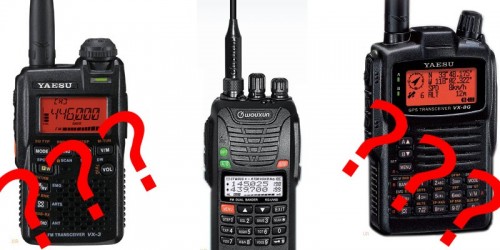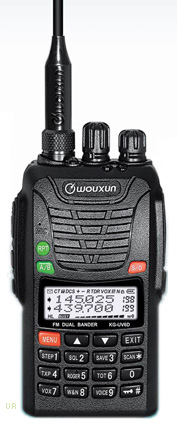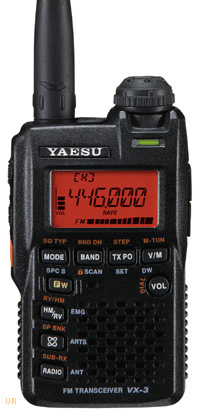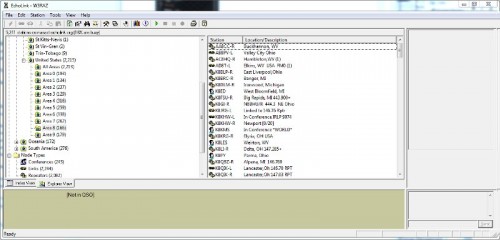In my continuing series on the subject of Ham Radio, I’ll now attempt to answer the great unknown question: Which ham radio should I buy??
Well What do you Want to Do?
In a lot of ways, this is almost the same as asking which phone one should buy. The first question you should be asking isn’t which radio do you want to buy, but what do you want to do, or what is your goal? Knowing what you want to do is important, because if you buy the wrong radio and try to do something it wasn’t really designed to do, you could get pretty frustrated!
With that said, there are many different modes and bands you can start with. In almost all cases, I recommend purchasing a handheld radio that has 2 meter FM abilities. Handheld radios have many benefits over a mobile radio or a base station radio. First, it’s easy to take along where ever you go. You’ll invariably need to have 2 meter equipment somewhere in your shack for serving in ARES (Amateur Radio Emergency Service) and many other public service areas of ham radio. It is my single most used band at the moment, with 70 cm coming in a close second. Additionally, 2 m and 70 cm also have a technology called repeaters that make them convenient to use.
Well What is a Repeater?
You might have already asked that question. If you have studied for the test, you may already have that answer. If you are just beginning to study, then you might want to know what one is! 🙂 A repeater is essentially a radio that listens on one frequency and repeats it on another frequency. This will usually greatly extend the range of a simple handheld radio, because the transmitter on the repeater usually has more power than your handheld. A typical handheld radio has, at most, 5 watts of power. A repeater can have up to the legal limit for the frequency in question. In the case of 2 meters, it’s usually 1500 Watts PEP (Peak Envelop Power). Most repeaters may use less power as the FCC regulations say you must use the minimum amount of power to establish communications. In any case, repeaters usually give you a greater range than the radio will by itself so you can see why you may want to use a repeater from the start.
We usually call repeater operation a duplex mode. It’s called duplex because your radio switches between 2 frequencies that are separated by some established limits. In the 2 meter band, the input frequency is plus or minus 600 KHz. I will get more into repeater operation in a future post.
What do I need?
In most cases, if you are looking at purchasing a hand-held radio, the radio typically comes with an antenna (usually what we would call a “rubber duckie” antenna), a battery, the radio itself, a manual and a charger. Some radios ship a belt clip and wrist strap. Some even ship a wired headset in the box. In most cases, that should be all you need. However, if you intend to work in an environment with a lot of noise or where you have a significant other who doesn’t want to hear your radio’s “noise” then you may want to also pick up a wired headset. You also should look into purchasing a spare battery and possibly a rapid charger.
Recommendations
I know that if you are new to this hobby, a lot of what I said might just be confusing to you. There are many choices. Some expensive, some not expensive. So what do I purchase? I’ve outlined a few good choices below.
Wouxun KG-UV6Dv2
Wouxun is a brand that I had never heard of until last year. A friend of mine, Russ Woodman(K5TUX) told me about them when I was attending the 2011 Southeast Linux Fest. The KG-UV6Dv2 is a dual band radio. Dual band means that it has 2 different amateur radio bands. In this case, it has 2 Meters and 70 centimeters.
This radio operates at 5 watts maximum on the 2 meter band and 4 watts on the 70 cm band. It also has all the features you would need to start working the repeaters in your area.
The best part about this radio is its price. Wouxon makes all of these features available at the incredibly low price of about $160 dollars ($159.95 plus shipping from Universal Radio). The price of this rig makes it an excellent radio to start with.
Yaesu VX-8GR
One of the most interesting radios I have seen in the last year is Yaesu’s VX-8GR. This radio is also a dual band radio but it also includes an integrated GPS as well as everything you need to use something called APRS or Automatic Packet Reporting System. What APRS does is it takes a position fix off of the GPS and then transmits this using a digital mode called packet radio. Other stations listening in can then see where you are by using a similar radio setup and a computer. You can even see other APRS stations on the internet by using Aprs.fi. Again, I will delve more into APRS in a future post.
The VX8GR can be had for $349.95 from Universal Radio.
Yaesu VX-3R
One final radio I will share is Yaesu’s diminutive VX-3R. This radio is about the size of a large cigarette lighter. It fits easily into your gear bag and almost feels like you aren’t even carrying a radio. The only downsides I can see to the VX-3R is that there is no keypad and the output tops out at 1.5 watts on 2 meters and only a watt on 70 centimeters. If you near the local repeater, then you should be fine with the VX-3R but if you live in a fringe area you might want to look at either of the above radios.
The VX-3R is $189.95 at Universal Radio.
Get Active!
There are many more available radios, but these are three that I like really well, and that I think would serve as good radios for someone just starting out in the wonderful hobby of amateur radio.
However, if you don’t have the budget for even the Wouxon, there is a free way to get your feet wet. That is the internet based service called Echolink. Echolink is free program available for Windows and Macintosh that lets you connect to a repeater over the internet. To use the software, you must first sign up for an account at the Echolink website and once your account has been approved you can download and install the software. Once you have the software, you are presented with a list of countries. Once you drill into the United States, it breaks it down by the 10 different call areas. Ohio is in the 8th call area and Pennsylvania is in the 3rd. There is a map available on te internet to help you determine which call area you live in.
Once you find a repeater (listed in Echolink as a station ending in a -R), you can connect and then you are on the air!
Some hams would not call Echolink real radio, however they would be wrong. Unless you are connecting to an internet only conference node type, you will likely be going over RF at the other end. Echolink is an excellent way to learn good operating procedures and get your feet wet with Amateur Radio.






Obviously one’s initial licensing approach would impact the choice of equipment as well, but it seems a handheld might be an appropriate radio type to experiment with to get one’s feet wet. Maybe another thing to consider might be the ability to add an external antenna, assuming one has difficulty connecting to local repeaters. Probably where I’m at in close proximity to a major metropolitan area that wouldn’t be a problem, but were I to go out camping…
BTW, the SkyWarn aspect you mentioned in a prior post has appeal to me since I like to hang around weather sites and chat with meteorologists (I’m a weather nut).
Adding an external antenna is fairly easy. You can, of course, purchase one but you can also build one too. I plan on building a antenna to try and improve my 6m profile, We have exactly ONE 6m repeater in Columbus and I can’t even bring it up on the southside. I can hear it though. So I need something that gets me a bit more gain. I will probably write a how to about building a 6m antenna.
As always great story Joel – I need to pick up a portable radio so this article was very timely
tnaks
Glad this worked out. Just submitted my next Ham Radio post. Took too long I know.. 🙂